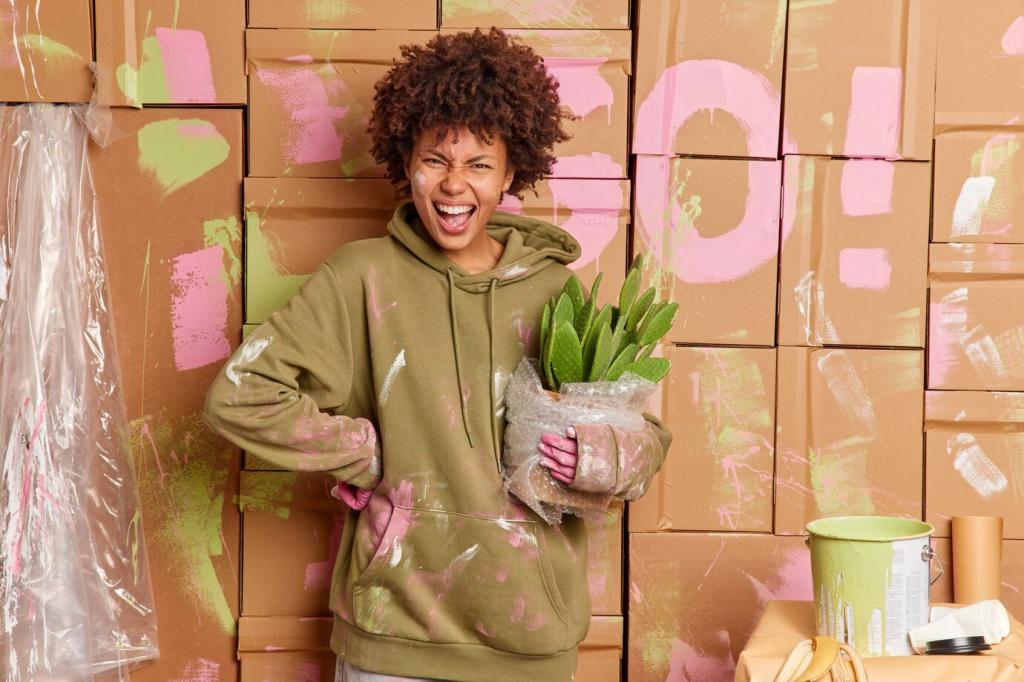Transforming Old Furniture with Modern Techniques
Reviving outdated pieces is both an art and a trend, combining respect for craftsmanship with the desire for a contemporary touch. Modern techniques offer endless opportunities to renovate, refresh, and reinvent old furniture, breathing new life into items that might otherwise go to waste. Whether you’re passionate about sustainability or simply want to update your home decor, transforming old furniture with modern approaches provides creative solutions and satisfying results. Discover how technology, materials, and innovative ideas can turn timeworn objects into stylish statements.

Eco-friendly composite materials have drastically impacted how furniture is renewed and reused. These innovative products are crafted from recycled plastics or natural fibers bound together, resulting in surfaces that are both resilient and sustainable. When applied to refurbishing old chairs or tables, they not only extend the furniture’s lifespan but also reduce the overall environmental footprint of the renovation process. This marriage of environmental responsibility and practicality is reshaping the industry and offering creative reinvention options for vintage enthusiasts.

Microcement is a rising star in the realm of furniture renovation. This ultra-thin coating adheres to almost any surface, creating a seamless and modern finish reminiscent of concrete but without its heaviness or thickness. Its ability to cover wooden or metallic furniture instantly modernizes the aesthetic, providing a fresh, industrial-chic vibe to pieces that previously appeared dated or lackluster. Moreover, microcement’s water-resistant qualities make it ideal for countertops, bathroom vanities, or outdoor furnishings, ushering in a new era of practical modernization.

Reupholstering is crucial in furniture transformation, and today’s fabric options blend luxury with longevity. Velvets, once thought impractical for high-traffic use, now arrive in performance versions that repel stains and resist fading. These textiles allow old sofas or armchairs to retain a plush, contemporary look without sacrificing durability. Performance fabrics, varying from easy-clean synthetics to advanced natural blends, present homeowners with vast choices to update their favorite pieces while ensuring they withstand daily life with elegance.
Contemporary Color Trends and Surface Treatments

Matte and Chalk Paint Finishes
Matte and chalk paint finishes have surged in popularity for their soft appearance and ability to mask imperfections. These paints adhere easily to a wide array of surfaces, allowing even beginners to quickly achieve a gallery-worthy effect. The resulting finish gives furniture a gentle, updated vibe that eschews shine in favor of a tactile, inviting texture. Moreover, these paints can be easily distressed or layered, providing options for those wishing to channel rustic or Scandinavian design aesthetics with very little effort.

Gradient and Ombre Techniques
Missed in years past, ombre and gradient treatments now offer a contemporary edge to familiar forms. Transforming a dresser or sideboard with carefully blended shades creates a sense of movement and artistry unique to each piece. This approach works wonderfully across both modern and vintage silhouettes, providing a visual link to current design trends while preserving the underlying craftsmanship. The resulting look is both playful and sophisticated, elevating the room with a single statement-making object.

Metallic Accents and Leafing
Modern homes are embracing shimmer, using metallic paints and leafing to add a touch of glamour to timeworn pieces. Gold, silver, or copper leafing enhances details on carved wood, legs, or hardware, emphasizing the furniture’s original features with a contemporary flourish. These metallic touches provide contrast to matte paints or natural materials, offering a dynamic juxtaposition that brings a renewed sense of luxury and relevance. As a result, old furniture can look custom-designed for the current moment.
Smart Upcycling with Technology Integration
01
Wireless Charging Solutions
Adding wireless charging features to nightstands, desks, or side tables elevates traditional pieces to new heights of usability. Subtly embedded charging pads allow for clutter-free convenience, letting users power up their smartphones and other devices without unsightly cords. The transformation process respects the furniture’s existing design while embedding 21st-century utility. Modern living often demands multifunctional spaces, and integrating such technology is a forward-thinking way to bring yesterday’s furniture into today’s smart homes.
02
LED Illumination Features
Subtle built-in LED lighting is redefining the role of both storage and display furniture. Whether illuminating the interior of a refurbished display cabinet or highlighting the curves of a restyled headboard, LEDs introduce a contemporary ambiance that traditional fixtures often lack. Color-changing and dimmable options further expand creative possibilities, letting owners tailor the feeling of their living space. These low-energy lights are easy to install during makeovers, upgrading not just style but also overall utility.
03
Integrated Bluetooth Speakers
Furniture equipped with high-quality integrated Bluetooth speakers merges entertainment technology with architectural design. An old cabinet or vintage credenza can effortlessly house a discreet audio system, providing seamless sound without cluttering the space with extra devices. The blending of technology and craftsmanship enables homeowners to maintain an aesthetic continuity while ensuring all the comforts and conveniences that modern life demands. This synergy highlights how thoughtful reinvention can both preserve and enhance.
